What is ganglion cyst? Definition and Etymology
In Greek, ganglion means a ball-shaped swelling or knot under the skin [1]. A cyst is a closed fluid-filled sac that is formed in the tissues [2]. A ganglion cyst is a noncancerous fluid-filled sac that arises from the muscle tendon, tendon sheath, joint capsule or ligament, most commonly on the wrist or foot [3].
NOTE: Ganglion cysts have nothing to do with neural ganglions, which are clusters of neural cells inside the body.
Ganglion cysts grow due to an accumulation of fluid in them and not because of uncontrolled cell growth, like in benign tumors [3]. Ganglion cysts also do not spread and invade surrounding tissues, like cancers do. In most cases, a ganglion cyst is not dangerous but may cause stiffness or pain in the affected joint [3].
Picture 1. Ganglion cyst on the top of the right wrist
(source: DermNet NZ, CC license)
Synonyms
Ganglion cyst may also be called:
- Bible cyst or bump, because they were used to be treated by slamming with a heavy book, such as Bible [4] or Gideon Bible (and hence Gideon’s disease).
- Ganglionic cyst
- Ganglion
- Digital mucous cyst, when it appears on the end knuckle of the finger
- Baker’s cyst or popliteal cyst, when it appears on the back of the knee
Similar cysts:
- Synovial cyst arises from the joint synovial sheath and is a true cyst (covered by epithelium on the inner side), so it is not the same as a ganglion cyst, but the appearance and treatment for both are similar [29,30,45].
- Bursal cyst arises from the bursa (a fluid-filled sac between the tendon and the joint) [11,30,38].
Locations
A ganglion cyst can develop in any joint, muscle or bone, but most common locations are shown in Picture 2 below:
Picture 2. Typical ganglion cyst locations
The Wrist
Wrist ganglion cysts most commonly appear on the back (top, dorsal) side, but also on the palmar (volar) side of the wrist [5]. Wrist ganglions can arise from the muscle tendons or, rarely, from the wrist bones [7].
Picture 3. A ganglion cyst on the palmar (volar) side of the wrist
(source: Eatonheand)
Picture 4. Ganglion cyst on the back (dorsal) side of the left wrist
(source: Wikipedia, CC license)
The Foot
Common locations include the top of the foot [5] or, rarely, on the bottom of the foot (sole) [27] and the back of the heel in the Achilles tendon [28].
Picture 5. A ganglion cyst in the foot
(source: Webmedcentral, CC license)
Picture 6. A ganglion cyst in the foot
(source: Wikipedia, CC license)
The Fingers
Ganglion cysts can appear on the fingers or thumbs, either on the base of the finger (palm side) or on the end knuckle (back side), in which case it is called mucous cyst [3,5].
The Knee
A ganglion cyst that appears at the back of the knee is called Baker’s or popliteal cyst [10,11].
Picture 7. An MRI image of a ganglion cyst behind the knee (Baker’s cyst)
(source: SciELO, CC license)
Other locations of ganglion cysts in the knee:
- Front of the knee (in the patellar tendon) [9,11] or in the anterior crucial ligament (ACL) [14]
- In the tendon of the quadriceps femoris muscle above the knee [62]
- Meniscus
The Ankle
Picture 8. A ganglion cyst within the bone in the ankle
(source: faoj.org, CC license)
Other Locations
- Other joints, such as shoulder [16], elbow (inner side) [20], the upper joint between the two forearm bones (see picture) [51] hip (a cyst appears in the groin) [50], or ankle (inner or outer) [5], armpit (axilla) [39], jaw (a lump arises from the temporomandibular joint and appears in front of the earlobe) [55]
- A disc in the lumbar spine (mostly in young men), which can cause sciatic pain (sciatica) [8]
- The femur (the bone in the thigh) [6] or humerus (the bone in the upper arm) [32]
- The quadriceps muscle in the thigh [40] or the gastrocnemius muscle in the calf [33]
Symptoms and Signs
Some ganglion cysts are hidden within the joints (occult cysts) and are not visible or palpable and may or may not cause symptoms [3]. An occult cyst on the wrist may show up when you bend the wrist [47]. Common symptoms of ganglion cysts include [3,4,5,7,25,53]:
- A ganglion cyst appears as a lump, pea- to plum-sized, covered with normal skin. A cyst may become bigger with joint activity and smaller with joint rest and may rupture when you hit it accidentally.
- On palpation, a cyst can be soft or firm, movable or fixed, tender or not.
- Often a cyst causes a constant dull ache in the joint. Pain from the wrist may radiate up to the arm [25].
- A cyst can cause stiffness and limited motion, snapping, catching or locking of the affected joint and may affect hand gripping or walking [3].
- When a cyst on the palmar side of the wrist presses upon the median nerve, it may cause tingling in the thumb, index and middle finger (carpal tunnel syndrome); when it presses on the ulnar nerve, it may cause tingling in the pinky and ring finger (Guyon’s canal syndrome).
- When a cyst is attached to a tendon, it may cause muscle weakness in the affected finger or toe.
- A ganglion cyst arising from the hip joint may appear as a groin mass, which may pulsate, and when it presses upon the femoral nerve, it can cause groin pain or tingling [50].
Pathology and Pathophysiology
A ganglion cyst may originate from [3,4,29]:
- A tendon, which is a band of connective tissue that joins a muscle to a bone
- A tendon sheath
- A ligament, which is a band of connective tissue that connects bones in joints
- A joint capsule [3,4]
- Rarely, ganglion cysts develop within the bones, most commonly on the wrist bones [7], but also in the femur [6] or humerus [32], cartilaginous discs in the spine [8], muscles (mainly in the calf) [33,34] or nerves [17,35].
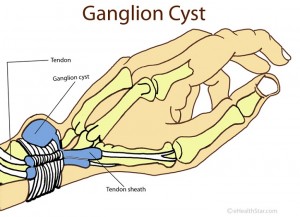
Picture 9. A ganglion cyst arising from the tendon sheath on the wrist
A ganglion cyst is like a balloon on a stalk filled with a translucent, jelly-like fluid. This fluid may originate from the synovial fluid normally present in the joint [25]. A cyst can be rounded or oval, and it can be small, like a pea, or large, like a golf ball. You can have one or multiple cysts in one joint or in more joints at the same time [11]. Cysts do not spread from one area to other, though [3].
The fluid from the joint may move into the cyst but not vice versa, so this is why a cyst can grow larger with the joint activity [25].
Histology and Cytology
The wall of the cyst is made of collagen (a type of protein) and fibrocytes (cells that produce collagen) [25]. There are no epithelial cells on the inside of the cyst wall, so ganglion cysts are not true cysts but pseudocysts [25]. The fluid within the cyst is made predominantly of water, hyaluronic acid, glucosamine, mucin and proteins [25,46]. There is usually no or only little tissue inflammation in and around the cyst [25]. A ganglion cyst is rarely calcified [43,44].
Causes and Risk Factors
The exact cause of ganglion cysts is not known. The prevailing opinion is that ganglion cysts are caused by degeneration of the connective tissues in the joint, probably due to chronic irritation or minor trauma, such as pressure from the shoes or landing on the hand with an extended arm [7,11].
Risk factors include [3,5,7,18,25,31]:
- Age 15-40 years, especially in women (rarely in children under the age of 10) [47]
- Repetitive strain injury of the joints, for example in gymnasts or athletes, or repetitive wrist use in computer users [41] and guitar players [42]
- Tendon injury
- Some people believe a ganglion cyst can develop in association with the De Quervain’s tendonitis (inflammation of the tendons at the base of the thumb), which, when it occurs in mothers who take care of their newborns, is called “mother’s wrist” [40].
- A single trauma may result in the development of a traumatic ganglion cyst.
- Some orthopedics believe shoes with high heels increases the risk of a ganglion cyst in the foot [54].
Diagnosis
Physical Exam
A doctor observes and palpates the cyst and shines through it by using a penlight (transillumination). Most ganglion cysts are translucent, while most tumors are not (Video 1) [3,7]. In most cases, a doctor can make a diagnosis of a ganglion cyst by a physical exam alone [25].
Picture 10. Transillumination of a ganglion cyst (mucous cyst) on the finger
(source: Eatonhand)
Aspiration
In doubtful cases, a doctor may check the content of the cyst by aspiration a small amount of fluid using a needle and syringe. When the obtained fluid is not clear as expected, it can be sent to the laboratory and investigated under the microscope (cytological investigation) [12].
Imaging
- Ultrasound is a quick and cheap procedure, which can reliably show a ganglion cyst [3,5].
- Magnetic resonance imaging (MRI) or computed tomography (CT) can reliably show a ganglion or mucous cyst but are rarely needed [3,5,13].
- X-ray does not show a ganglion cyst but can rule out tumors and bone spurs [3].
Differential Diagnosis
Abnormalities that can resemble a ganglion cyst [11,13,31,43]:
- A benign tumor, such as neuroma, lipoma, fibroma, chondroma, schwannoma, hemangioma, osteoma
- An epidermoid cyst
- Plantar fibromatosis
- A rheumatoid nodule (in rheumatoid arthritis or systemic lupus erythematosus)
- A viral wart
- A keratinous horn
- Foreign body granuloma
- An abscess (a collection of pus)
- Xanthomas (lipid deposits in individuals with hypertriglyceridemia), which are yellow
- A bone spur or osteophyte (hard)
- A bone cyst (hard)
- A gouty tophus (in the big toe, usually very painful)
- An ulnar or radial artery aneurysm (pulsating)
- Adventitious bursa (soft)
- Calcific tendonitis
- Giant cell tumor (a noncancerous but aggressive tumor) (hard)
Lumps in the Neck
A lump in the neck is rarely a ganglion cyst; it is more likely an abscess (after infection in the mouth or throat), enlarged lymph node or a thyroid nodule, goiter or cancer.
Ganglion vs Cancer
Ganglion cysts are translucent when you shine a light through them, but cancers and benign tumors are not.
Treatment
A ganglion cyst disappears spontaneously without treatment in up to 58% cases [3,4,25,26].
Painkillers
When a cyst hurts, over-the-counter (OTC) painkillers, such as aspirin or ibuprofen, may help. Holding an ice pack (wrapped in a cloth, not directly to the skin) over the cyst for 20 minutes few times a day may also provide pain relief.
Wrist Braces or Splints
Wrist brace or splint prevent wrist mobility and may reduce pain and may, eventually, lead to a reduction of the cyst size [3].
Manual Compression
A doctor may press upon a soft cyst with fingers until it bursts [19,25]. Doctors rarely use this method nowadays. Do not try to pop a cyst by yourself because you may cause damage to the nearby nerves [7].
Puncture of the Cyst
A puncture (acupuncture) of the cyst is rarely performed nowadays; a doctor pushes a suture perpendicularly into the wrist, and the cyst is allowed to drain for several days [7,19,25].
Video 1. Puncture of the cyst
Cyst Aspiration
Aspiration is mainly used to treat cysts on the back of the wrist (Video 2) and in the foot [21]. A primary doctor or orthopedic surgeon cleans the skin above the cyst, injects a local anesthetic near the cyst and drains the cyst fluid by using a needle and a syringe. After aspiration, a doctor may inject a steroid into a cyst — this is supposed to reduce the chance of the cyst recurrence, but this has not been proven [25]. Cysts on the palmar side of the wrist may be guided by an ultrasound to avoid injury of the radial artery [25]. A doctor will place a bandage over the puncture, and you can leave the hospital right away and continue with your activities. The procedure may require you to stay in a doctor’s office for about 30 minutes.
In about half of the cases, after aspiration, the cyst will be filled with fluid in some time [3]. When a cyst is aspirated 3 times, in about 80% cases it will be cured permanently [4,5]. Splinting the wrist after the cyst aspiration has not been proven beneficial and may actually prolong the stiffness of the wrist [25]. According to one study, immobilization after cyst aspiration does not reduce symptoms or prevent cyst recurrence [48].
Video 2. Aspiration of a dorsal wrist ganglion cyst:
local anesthesia and aspiration
Surgery — Ganglion Cyst Removal (Ganglionectomy)
Cyst excision, which is usually an outpatient procedure, which lasts about 15 minutes, involves removing the cyst, its stalk and often a part of the tendon sheath or joint capsule from which the cyst originates with the scalpel [3] or laser [19,56]. A surgeon will close the wound with sutures and wrap the operated area with a bandage. You can usually go home in few hours after the procedure [3].
- In open surgery, an orthopedic surgeon makes about 2 inches (5 cm) cut through the skin and removes the cyst (Video 3) [3].
- In an arthroscopic or keyhole surgery, an operator pushes a thin endoscope with a camera and instruments at the end through a small incision in the skin into the joint and removes the cyst [3]. Arthroscopic surgery usually results in less pain after a procedure and a shorter scar than open surgery [3,36].
Surgery can be performed under local or regional anesthesia (you are awake during the procedure) or general anesthesia (you fall asleep) [15].
Video 3. Surgical removal of a ganglion cyst from the top of the wrist: preparation, excision, sutures, bandage.
Recovery After Wrist Ganglion Surgery
You might need to wear a sling or splint for 3-7 days after an operation to avoid an injury to a surgical wound and to give time for swelling to go away [7]. A bruise, swelling and tenderness in the operated area may persist for few days. At around day 10 after surgery, you will need to have stitches removed. Do not lift any objects heavier than a pound before sutures are removed [61]. Pain on the wrist may persist for several weeks [4]. Persistent swelling or joint stiffness may require physiotherapy. The incision leaves a permanent scar, which can be thick, red and numb, and, in some individuals, a small area around the scar will also be permanently numb [22].
- In the first 3 days after an operation, holding an ice pack over the wound dressing (NOT directly on the skin) may reduce swelling.
- Recovery time after wrist ganglion removal may range from few days to 6 weeks, depending on how extensive the surgery was and how much you use wrists during work [3,4,23].
- You may be able to drive after 2-4 weeks [22].
- A doctor or physiotherapist may suggest you specific exercises to maintain the mobility of the joint and massage of the scar to prevent adhesions.
- A surgical wound may need about 2 months to heal completely.
Recovery
- After removal of a cyst from the top of the foot or big toe, you may be able to walk straight away.
- After removal of a cyst from the bottom of the foot, you might need to wear an offloaded surgical shoe for 2-3 weeks.
- Do not smoke during the recovery. Nicotine causes narrowing of the blood vessels and may greatly prolong healing of the surgical wound.
The Cost of Surgery
The cost of ganglion cyst removal surgery may vary greatly and depends on the hospital, the type of anesthesia used and the difficulty of operation. In the United Kingdom, the cost (as of September 2013) may range from 1,300 to 1,750 £ (British pounds).
Prognosis and Complications During and After Surgery
Possible complications of the ganglion cyst surgery [4,7,25,26]:
- Damage to the radial artery during operation of the cyst on the palmar side of the wrist
- Damage to the median or ulnar nerve on the wrist resulting in carpal tunnel or Guyon’s canal syndrome with numbness or tingling (paresthesia) in fingers
- Infection of the joint or surgical wound
- Allergic reaction or other side effects of anesthesia
- Permanent pain and stiffness of the joint
- Decreased range of motion in the joint, decreased grip strength
- Neuroma — a benign tumor that develops from the nerve
- Recurrence of the cyst in 10-48% of cases, much more likely after the removal of the volar than dorsal wrist cysts 37. When the associated part of the synovial sheath from which the cyst arises is removed as well, the recurrence rate may be as low as 4%. According to one study, a volar wrist ganglion cyst can recur as early as in one month or as late as after 12 years [49].
- A surgery leaves a scar, which can be sometimes thick and red (keloid) or tender [37].
- Laser surgery may result in less bruising and scarring than a surgery by a scalpel [57].
Arthroscopic surgery results in less pain and a smaller scar than open surgery, but the recurrence rate is about the same in both types [7,36].
Natural Home Remedies
What can you do:
- If you have a cyst on foot, you can try new, more comfortable shoes.
Do not do this:
- Do not pop a cyst with a needle, since you may not be sure if it is a cyst at all, and because you can cause a cyst infection [2].
- Do not try to burst a cyst by slamming it with a heavy object like a book because you can cause damage to the nearby nerves [2].
Homeopathic and Holistic Treatment
There is a lack of scientific evidence about the effectiveness of homeopathic or holistic methods in the treatment of ganglion cysts.
Prevention
The exact cause of ganglion cysts is not known, so currently, no prevention guidelines exist. If you practice yoga you should avoid certain positions with leaning on your hands. Avoiding shoes with high heels may help prevent cysts in the foot.
Summary
- A ganglion cyst often disappears spontaneously.
- Aspiration usually results in symptoms relief, but the cyst may return in up to 50% cases.
- Surgical removal is currently the most effective cure for a ganglion cyst, but it leaves a scar, stiffness and pain in the joint may persist or even worsen, and the cyst may return in 4-48% cases.
- References
- Ganglion Dictionary.reference.com
- Cyst Dictionary.reference.com
- Ganglion Cyst of the Wrist and Hand Aaos.org
- Cysts – ganglion cysts Betterhealth.vic.gov.au
- Ganglion cyst EmedicineHealth
- Intraosseous ganglion Claripacs.com
- Genova R, Ganglion cyst Emedicine
- Marshman LA et al, 2005, Disc cysts” and “posterior longitudinal ligament ganglion cysts”: synonymous entities? Report of three cases and literature review PubMed
- Jose J et al, 2011, Symptomatic intratendinous ganglion cyst of the patellar tendon PubMed
- Bui-Mansfield, Baker cyst imaging Emedicine
- Jacobson JA Fundamentals of Musculoskeletal Ultrasound, y. 2007, p.259
- Camasta CA, Excision of the ganglion cyst Podiatryinstitute
- Tuli SY et al, 2011, Ganglion cyst Pediatricsconsultantlive.com
- Sloane J et al, 2010, Large Intra-Articular Anterior Cruciate Ligament Ganglion Cyst, Presenting with Inability to Flex the Knee Hindawi
- GANGLION CYST REMOVAL (GANGLIONECTOMY) Summitmedicalgroup
- Ganglion cysts Neckandback
- Spillane RM et al, 1996, Peroneal Nerve Ganglion Cyst Ajronline
- Ganglion cyst Mayo Clinic
- Genova R, Ganglion cyst treatment and management Emedicine
- McFarlane J et al, 2008, A ganglion cyst at the elbow causing superficial radial nerve compression: a case report PubMed Central (Elbow)
- Ganglion cysts Orthobullets
- Ganglion cyst NHS.uk
- Ganglion- synovial cyst WebMD
- What’s Causing This Lump on My Neck? Healthline
- Gude W et al, 2008, Ganglion cysts of the wrist: pathophysiology, clinical picture, and management PubMed Central
- Suen M et al, 2013, Treatment of Ganglion Cysts Hindawi
- Ganglion Cyst Removal Healthline
- All About Achilles Tendon Problems Anklecenter
- Ganglion cysts MESH
- Gonzales DM, Cystic Lesions About the Knee Emedicine
- MacDonald DJM et al, 2007, The Differential Diagnosis of Foot Lumps: 101 Cases Treated Surgically in North Glasgow Over 4 Years PubMed Central
- Muir B et al, 2011, Intraosseous ganglion cyst of the humeral head in a competitive flat water paddler: case report PubMed Central
- Case Report : Intramuscular Ganglion Cyst of the Gastrocnemius Muscle Korean Journal of Dermatology
- Park S et al, 2009, Ruptured intramuscular ganglion cyst in the gastrocnemius medialis muscle: Sonographic appearance Wiley Online
- Spinner RT et al, 2012, Pure Peroneal Intraneural Ganglion Cyst. Hindsight is 20/20 Turkishneurosurgery
- Gallego S et al, 2010, Arthroscopic resection of dorsal wrist ganglia: 114 cases with minimum follow-up of 2 years PubMed
- Lidder S et al, 2010, Surgical excision of wrist ganglia; literature review and nine-year retrospective study of recurrence and patient satisfaction PubMed Central
- Graham D et al, 1999, Bursal cyst: an unusual axillary mass PubMed
- Ganglion cyst topic guide EmedicineHealth
- Kim YJ et al, 2013, Intramuscular Ganglion of the Quadriceps Femoris PubMed Central
- Computer-related repetitive stress injuries KidsHealth.org
- Anyone had to deal with ganglion cyst surgery? Acousticguitarforum
- Vanhoenacker FM et al, 2011, Pseudotumoural soft tissue lesions of the hand and wrist: a pictorial review
PubMed Central - Tehranzadeh J et al, 1998, Radiographically ossified ganglion cyst of finger in a swimmer PubMed
- Khan AM et al, 2006, Spinal lumbar synovial cysts. Diagnosis and management challenge PubMed Central
- Ganglion Cysts of the Wrist University of California, San Francisco
- Ganglionic Cysts of the Wrist Wheelessonline
- Korman J et al, 1992, Efficacy of immobilization following aspiration of carpal and digital ganglions PubMed
- Jacobs LG et al, 1990, The volar wrist ganglion: just a simple cyst? PubMed
- Kalaci A et al, 2009, Femoral nerve compression secondary to a ganglion cyst arising from a hip joint: a case report and review of the literature PubMed Central
- Lifchez SD et al, 2008, Compression Neuropathy of the Radial Nerve Due to Ganglion Cysts PubMed Central
- Vayvada H et al, 2003, Giant ganglion cyst of the quadriceps femoris tendon PubMed
- Ganglion cyst removal Surgeryencyclopedia.com
- Ganglion Cysts: Another Reason to Avoid Heels Footdoctorsnj.com
- Kenney JG et al, 1987, Recognizing the temporomandibular joint ganglion PubMed
- Kim JS et al, 2009, Carbon dioxide (CO2) laser-assisted ablation of lumbar discal cyst PubMed
- What Is A Cyst: On Face | What Causes Cysts | Cyst Removal Yogawiz.com
- After your ganglion cyst excision surgery University of Washington


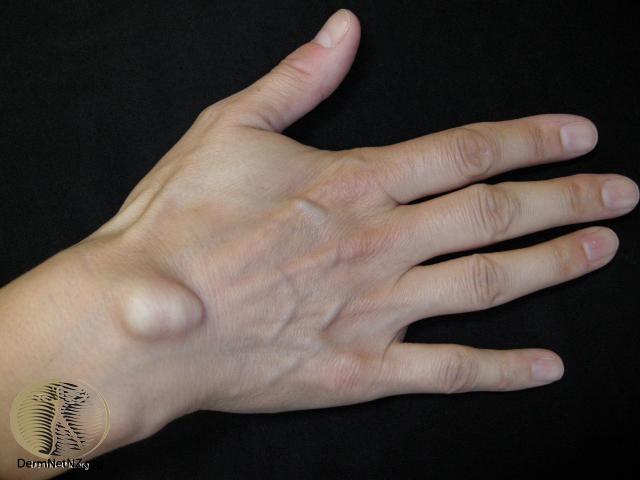
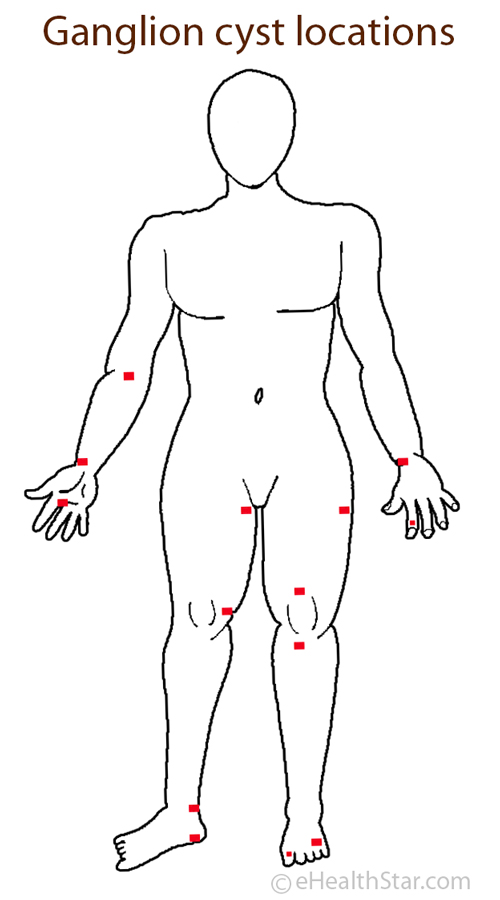
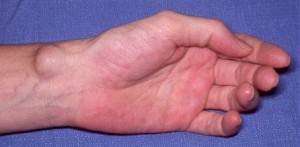
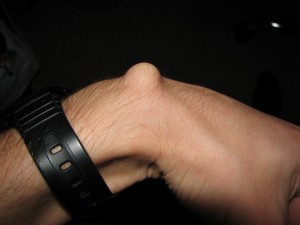
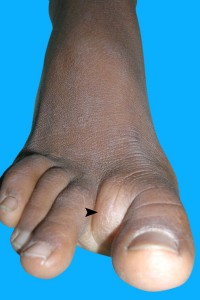
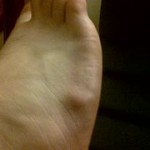
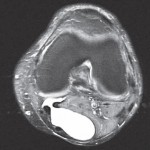
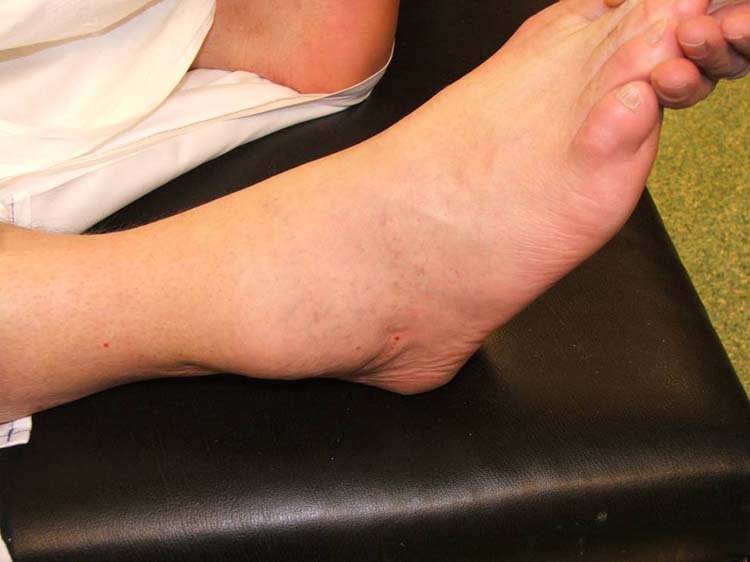
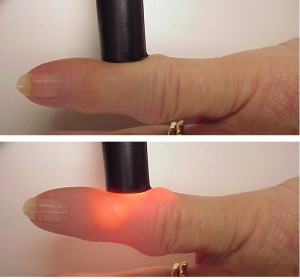
I have what is believed to be a bursal cyst on the joint below my pinky toe. It has grown over the last few months and my Podietrist wants to remove it surgically. Is this my best option?
I have 1 on my tight hand
and decided to leave it alone and it is going away on its own.
My sister has a huge golf ball sized or larger cyst on upper right side of foot has extreme pain having trouble finding a doctor/surgeon who will help her. She’s been to 3 podiatrists and 2 orthopedics all say they don’t do that procedure I feel terrible as she has a on her feet job and comes home and cries for hours in pain we are running out of options any suggestions appreciated
She needs to try to get a doctor.
I have 3 ganglion cysts on the top of my foot, lined up diagonally. I recently had a MRI and was planning to wait until November to have them surgically removed as they were more unsightly than painful. I rarely wear a shoe that restricts them. However, I recently had to wear a work boot for a field exercise, and I’ve never had anything to hurt so much. I had to take the boot off and on all day. I now have numbness to the large toe and the area where the cysts are, and my ankle is swollen. Should I return to my doctor before the surgery to have this checked out? I wonder if the restriction of the boot pressed against the cyst caused some nerve damage to my foot!
Numbness very likely speaks for a temporary nerve damage. Avoid those boots. If numbness does not improve in several days, go to the doctor.
I have a ganglion cyst on my wrist the pain is unbearable and have no feeling in my hand. I went to plastic surgeon today and consulted but said he won’t do anything for a few more months only if pain gets worse.
I guess what I’m trying to say is, is this a normal response and should It be that long with no treatment if pain is unbearable and having no feeling and loss of movement?
You my want to contact another surgeon. Having no feeling in the hand may be due to a cyst pressing on a nerve, which may potentially lead to a permanent damage of the nerve. I strongly suggest you to try to solve this soon.
I just had my cyst surgery removed today on my left lower wrist, the question I have is that I can move my three fingers but I cannot feel them. How long would this numbness last it has been over 6 hours so far.
You should see some improvement in the next few days – if not, go back to the doctor. It may take several weeks for sensitivity to restore completely, though.
I’ve had a cyst in my wrist for about 5 years now which has grown over these years, it wasnt painful initially but with time the pains have increased, only during times i use my wrist vigorously. I don’t want to undergo surgery, it is possible for it to go away through home remedies?
A doctor can simply drain a cyst with a needle. This has a much greater rate of recurrence than a surgical removal, though.
Who could deal with my foot ganglion, as the nhs wont
Why it wouldn’t?
I have a ganglion on my index finger they did a Songram and they said it can be drained or smash they said it will e better to get surgery so when I went to get it look at they tried drain it didn’t help so they are going to do surgery and that I need surgery but how and where do they stick the needle to num the hand I’m going to have it done in July I’m just nervous cause I Dont like needles and pain I’m a big cry baby and I’m an adult. I just want to know what to expect.
They give you an injection of a local anesthetic at the “root” of your finger, they wait a minute and you will not feel a thing, no matter what they will be doing with your finger. You look away and you’ll be fine.
I have the same thing going on for 6 months now. As I read your situation I wonder if I should leave it. Please share what you have done since March. I am a baby also & look for happy juice for any unexpected doctrine. Mine is located on my pinky finger.
I have several ganglion’s grouped together on the ball of my foot. It can be very painful. Is there anyone out there that has the same location/problem? If so what have you done about it?
You may first want to get the exact diagnosis.
I had a ganglion cyst surgically removed and 3 months later it came back with a vengeance. I can barely move my finger and the pain is unbearable.
To permanently cure a ganglion cyst, it should be completely removed (with its wall). If it is only drained, it typically recurs.
I have large balls of fluid on the outside of both ankles a physiotherapist said they are ganglion cysts but the doctor disagrees. They have appearecd and grown in the last 10 years though i have always been overweight i havent had these lumps . They dont hurt but are so unsightly people ask what they are
Debra, a doctor can try aspirate some material from the bump and send it to histological investigation to see what exactly it is. If it’s not a ganglyon cyst, it can be a lipoma (a nondangerous benign tumor composed of fat), or some other type of cyst, for example.
In this article you can scroll down to picture 6 and see that a ganglion cyst is partially translucent when you shine through it by a torch. A lipoma is not translucent.
I have a Ganglion Cyst on the inside top of my left wrist. In the past, when it has gotten to a certain size, it will disappear. When it disappears, it is strange because one day it is there and then the next it isn’t and I’m like “where did it go?”. However, this time, it has grown bigger than it has in the past and shows no signs of disappearing. Also, in the past, it was never really bothersome, but now it is. I guess because it is bigger and putting pressure on surrounding nerves and ligaments, etc. It is painful when I move my wrist a certain way and it hurts especially if I put my hand flat on a table and put pressure on the hand by pressing downward. I have seen articles where people have gotten the cysts drained, but they almost always return, but I am not sure I would want to have the entire cyst removed because I have seen photos of some pretty massive scars too. I don’t know what to do- anyone have any ideas??
Camille, your previous cyst probably popped on their own. You know the options – draining or complete removal, so it’s on you to decide. You can contact a doctor and ask about a scar.
I just had a cyst removed in the same spot as you back in February. And it does hurt. Here it is almost August and I’m still trying to recover from it. As far as the scar trust me that scar is nothing compared to the pain of this surgery. And if u have a good physical therapist they can give you stuff to make the scar less noticeable. Can’t see mine at all now. So good luck in whatever you choose to do.
I had a Ganglion removed from my wrist, just over a month ago. As it is healing, small scabs have formed and there is some puss underneath the scabs (that I can see). The rest of the scar is healing ok, due to its location it is taking longer to heal than expected. Shall I go to the doctors to get this checked out?
Samantha, yes, a wound can get infected and this is maybe happening.
How to get rid of a dorsal ganglion cyst?
Sayantan, a quick way is with aspiration – a doctor can drain it using a needle.
I have ganglion cysts on top of left goot,Dr.want to drain,how long is re covery n how pain ful
Kathryn, you get local anesthesia, so it should not be painful more than like getting a vaccine. Recovery should be very short, because it’s just a puncture and that’s it. Cysts that are drained often recur, though.
My doctor tells me I have an arthritic cyst in my talas. I had an mri. He has given 2 cortisone injections and recommends no more. He gave me a perscription for an orthopedic in my shoe. So I’m doing that. Can such a cyst be aspirated? Also I am getting cold laser treatments. The doctor who diagnosed the cyst is an orthopedic surgeon. What is the difference between an arthritic cyst and a ganglion cyst? Can an arthritic cyst benefit from laser treatments and if so, about how many should suffice? And do patients who have surgery to remove an arthritic cyst develop further pain after surgery?
Jennifer, “arthritic” cyst is any cyst in the joint, so this term reveals only it’s location. There are several types of arthritic cysts, one of them is a ganglion cyst. To know which exactly you have, you would need to ask the surgeon.
Most cysts can be aspired–in this case only the fluid is removed, but the membrane and the stalk are still there, so aspired cysts often recur. The cyst can be also completely surgically removed. If the cyst is the cause of your pain, its removal would result in pain relief, but your surgeon can tell you some statistics about this. Even surgically removed cysts can recur. The more completely the cyst is removed, the less likely it will recur.
Laser treatment might be as effective as aspiration, but I have no real information about this. The problem is that cysts treated by these “lighter” approaches often recur. In general, conservative (non-surgical) treatments of ganglion cysts are not very effective. Sometimes, a cyst heals spontaneously, but I can’t say if this can happen in your case.
Most primary care offices will be able to aspirate (remove the fluid with a needle) in their office. If your provider doesn’t do this, they can recommend someone who can.
In my primary care office, this is typically a 30 minute appointment which includes consultation and the procedure together in one visit.
hello,I have a growth on the left back side of my,head.I went for a medical checkup,and the doctor said it is a ganglion.please tell me what could it be and how I can have it removed.
John, first you need to get an exact diagnosis from a specialist (your primary doctor can lead you where to go). If it is actually a ganglion cyst, it can be removed by a minor surgical procedure.